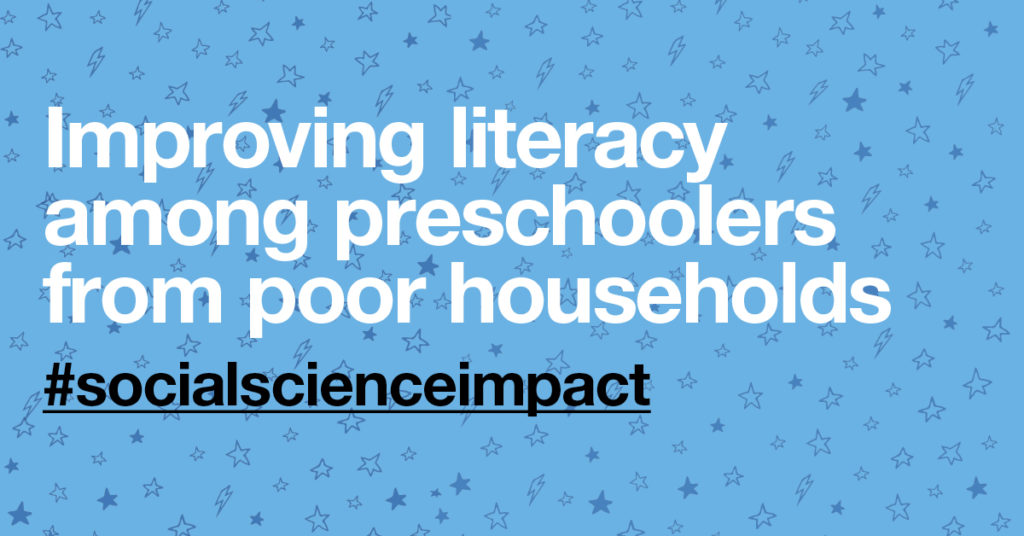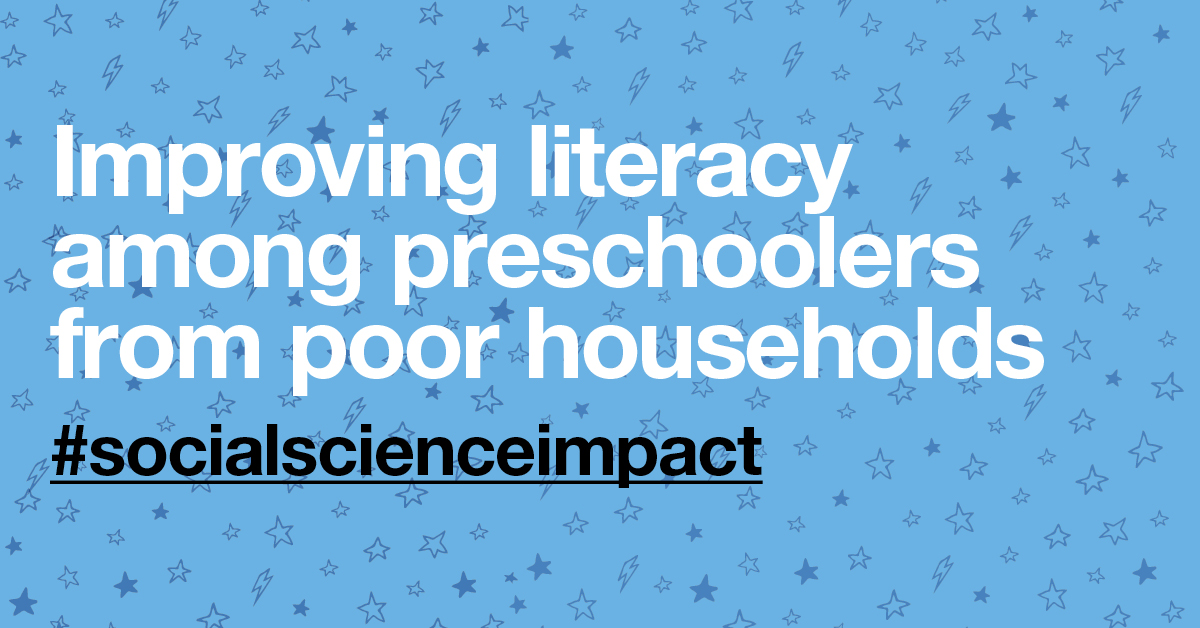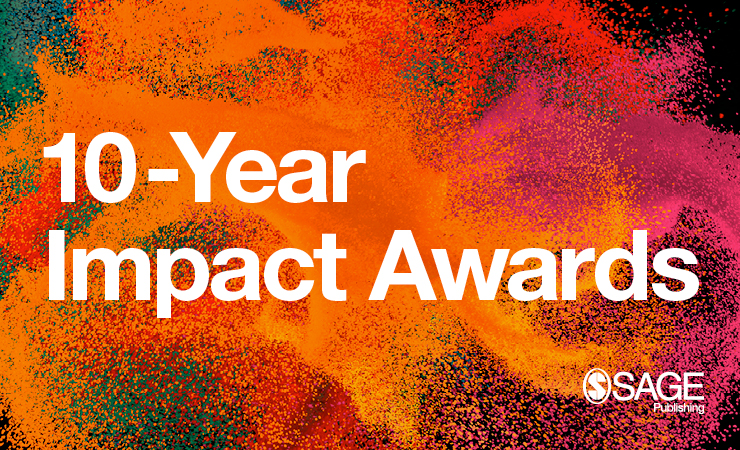Impact in Action: DRIVE-ing to Improve Elementary School Literacy

The impact story of our Southern Connecticut State University Reading Evaluation And Development of Skills (R.E.A.D.S.) Lab began several years ago when two schools serving large populations of students from lower-socioeconomic backgrounds requested help to solve their response-to-intervention (RTI) crisis.
In typical RTI models, about 15-20 percent of elementary school students may read below grade-level, whereas in urban schools, this percentage can be 50-80 percent. When demand far outweighs the staff needed for RTI, resources become strained and all students who need intervention cannot be adequately served. The schools requesting our assistance had about 50% of students reading below grade-level. Initial assessment data (ours and the schools’) indicated that many struggling primary grade readers lacked adequate vocabulary, comprehension, and print exposure.
These results were consistent with the research literature indicating the importance of early literacy experiences in the home (e.g., conversational turn-taking and reading with caregivers) for the development of vocabulary and comprehension. We entered into our school partnerships originally intending to improve the identification and remediation specific reading disability (dyslexia), but we soon realized we were facing a different task, that of remediating problems due to impoverished literacy backgrounds.

In our search of the research literature, we discovered a technique called dialogic reading (DR) that was effectively used by Grover Whitehurst and colleagues to improve the development of vocabulary and language skills in preschool children from high poverty backgrounds. DR is a shared book reading technique in which adults stop frequently during reading to ask open-ended questions (e.g. recall, personal connections, and Wh-questions), not in an evaluative way but in a way that promotes dialogue. Adults also praise correct responses, provide scaffolds, and correct and expand children’s responses (to model more advanced language).
We adapted DR for use as an individual intervention with school-age beginning readers. First, we streamlined the number of strategies (removing some that were more appropriate for early childhood) and created the acronym, EMPOWERED, to summarize these strategies. Second, we added an emphasis on stopping to identify and discuss vocabulary words using some of the EMPOWERED strategies. Our new technique is called Dialogic Reading with Integrated Vocabulary Enrichment, or DRIVE. We trained undergraduate research assistants (RAs) to implement this approach, in which they read picture storybooks with a child for 10-minute sessions, stopping frequently to create a dialogue using the EMPOWERED strategies.
Over the past five years, we have conducted research evaluating the efficacy of DRIVE for improving the reading comprehension of struggling first and second graders in urban schools. Our results have indicated that about two total hours of individual intervention over six weeks can improve students’ reading comprehension, narrowing the gap between these struggling readers and typically achieving peers. There is also a trend in improving vocabulary that we are continuing to investigate because we added the emphasis on vocabulary later in the process of developing the technique.
To yield the most benefit, we chose to provide as much intervention as possible to a small number of children in our studies rather than providing more students with fewer minutes of reading. The children with whom we worked were the lowest performing in their grade on our assessments and the schools’ assessments. Despite our small samples, we have replicated the positive effect of DRIVE several times with children in different schools over different school years. Importantly, we have witnessed children, who did not like reading and who were hesitant to engage in dialogue, become excited about reading. Our RAs would enter the classroom, and children would exclaim ‘pick me!’ Toward the end of the intervention we observed children who had internalized the process and wanted to ask RAs questions as they read a story.
This simple technique, which is free, requires little training, and takes only a few minutes per day, has the potential to significantly impact the reading achievement of struggling primary grade readers in many schools. We are currently investigating ways we can scale up DRIVE so that it can be implemented by paraprofessionals or volunteers in every school. Our intervention can become part of the solution to the literacy crisis that schools are facing. The well-documented reading achievement gap begins prior to school entry and continues to widen through the intermediate grades.
A recent book by Natalie Wexler, The Knowledge Gap, has spurred passionate discussion among educators about the importance of prior knowledge as a foundation for text comprehension. Children need a strong knowledge base about what they are reading in order to comprehend, make inferences, and think critically and to benefit from formal reading instruction. Our DRIVE intervention—with its emphasis on vocabulary, dialogue, and connecting the story to personal experiences—fills the gap in prior knowledge that we have seen in many at-risk readers from impoverished backgrounds. Unlike remedial interventions that many struggling readers dread, DRIVE is an intervention that provides students with positive reading experiences, so they come to learn that reading is not a chore but a pleasure.
Our impact story goes beyond the individual children we have worked with and the schools who benefit from our assessments and interventions. The undergraduate students we mentor as RAs have also benefited from working directly with children on our project. Over the last several years, we have trained over 100 RAs to administer standardized assessments and implement interventions such as DRIVE. Many of these students have been admitted to competitive graduate programs in areas such as school psychology, school counseling, and education, and they have chosen to begin their careers in local school districts within our state. Our students often report back to us that the skills they learned as part of our project have transferred to their graduate courses and beyond.
The experiences we have provided our students have clearly contributed to their success in achieving their career goals. Therefore, a simple idea we had to help local schools has evolved into an enterprise that benefits struggling elementary readers, their schools, and future educators and school personnel who give back to their communities through their service to the profession.































































































